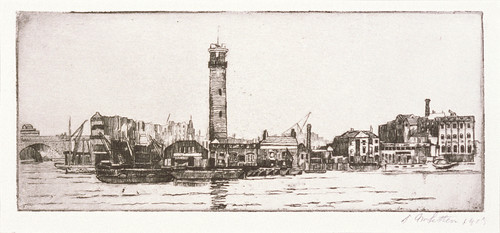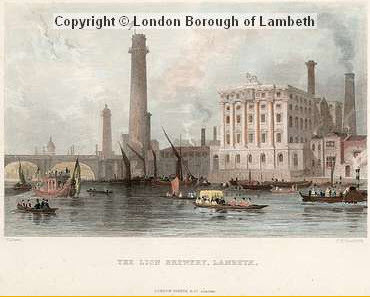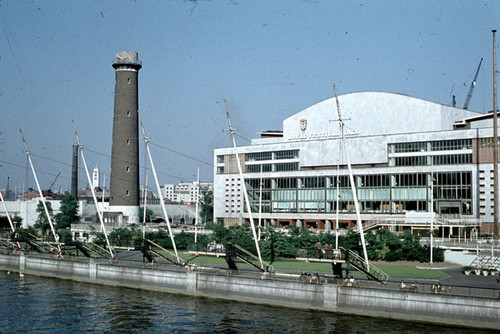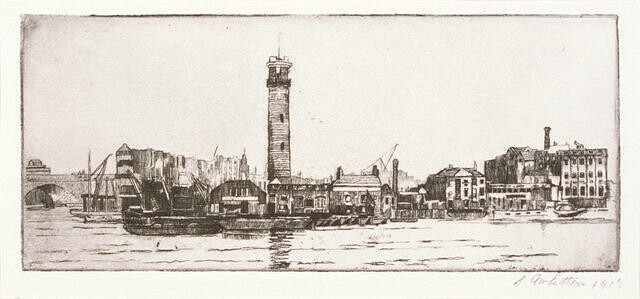B.
A shot in the arm
Behind the scenes
Another work from the murky depths of our collection has revealed its back-story

Artist unknown The shot tower. Collection of Christchurch Art Gallery Te Puna o Waiwhetū
We are still stuck on the name of the artist of this one, but it has been reliably identified as the shot tower that stood on the south bank of the River Thames in London. It was only demolished in the 1960s and its site is now occupied by the Queen Elizabeth Hall. Here is the site as it looked in about 1850, courtesy of Lambeth Borough Council Archives.

Shot Tower and Red Lion Brewery, Waterloo Hand-coloured engraving by E.W. Radcliffe, drawn by T. Allom. Lambeth Borough Council Archives
The photo below from David Wright and licensed for reuse under this Creative Commons Licence shows the shot tower in 1959, with the munitions factory that surrounded it long gone and the tower itself converted into a broadcasting tower for the 1951 Festival of Britain.

© Copyright David Wright and licensed for reuse under this Creative Commons Licence
When our print was created in the early twentieth century, this part of Lambeth was seriously industrial: the buildings visible include a brewery and the towers from which lead was dropped into water to make bullets. If the artist looked behind him he would see Royal, political and society London: the Palace of Westminster and the backs of desirable buildings in the Strand such as Somerset House. But he chose to look across the river and to depict the industrial and the ugly.
After bomb damage in the Second World War the whole area was cleared and became The South Bank, Britain's leading assembly of buildings devoted to art, theatre and music, itself a controversial re-development which took forty years to complete.
You can find out more about this formerly industrial corner of central London at British History Online and at Lambeth Borough Council archives.
